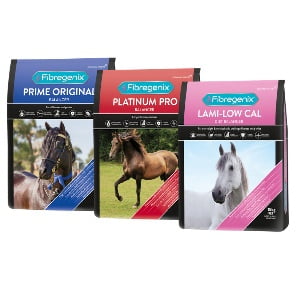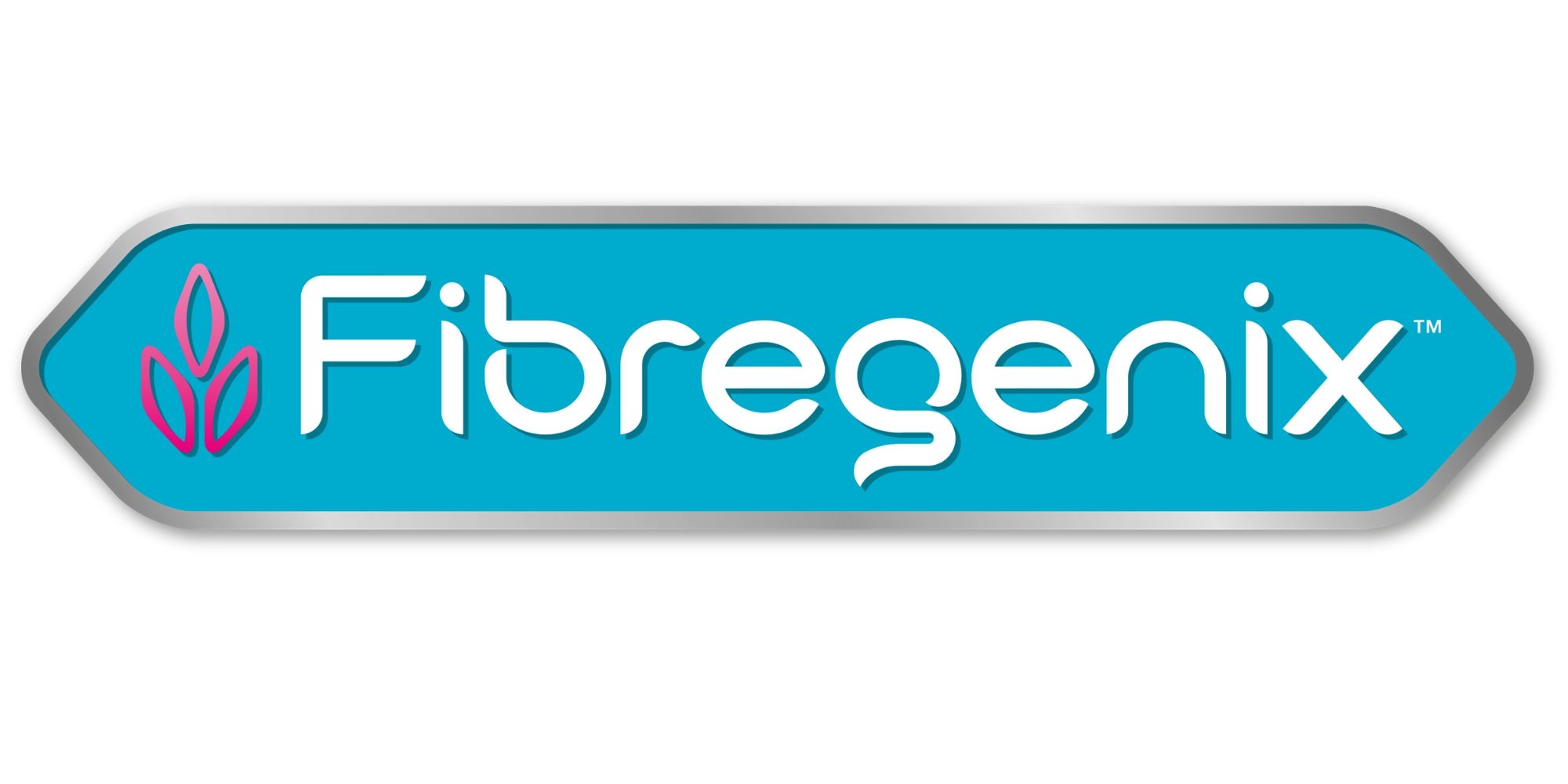Feeding Horses in Drought
BY FIBREGENIX PARTNER JANE COCKERTON
Jane is based in Rockhampton, Queensland. She has a wealth of experience in feeding horses in drought conditions and feeding horses correctly.
Firstly, it’s best to explain how much a horse should eat every day. An average horse needs 2.0-2.5% of its body weight to maintain good condition and proper gut function. This means a 14.2hh horse will need around 8kg of food daily, and an average 16hh horse will need 10kg daily. Usually, this comprises of forage in the form of grass. During drought however, it’s very important to feed conserved forage (hay) to replace some or all of the horse’s diet.
Hay Suitability When Feeding Horses in drought conditions
Hay comes in many different forms, and depending on local differences and availability, it varies in energy content and palatability. Generally, hays are grouped into grass hays, legume and cereal hays.
All hays have an energy value, or as it’s commonly known – DE (Digestible Energy). This indicates how much energy an average horse can extract from a kilogram. As a rule, the older the hay, the less energy and nutrient content it has.
There’s another big consideration to take into account – the NSC level. Simply put, this is non-structural carbohydrates (starch and sugars). Most cereal hays are high in NSC as they’re made from partially developed seed heads and unripened stems of grain-producing plants.
The following list of hays provides useful details to help you choose what will best suit your horse or pony.
1. Rhodes Grass – the most common type of cut grass hay
Energy value approx 9MJ/kg. NSC content (starch 0.34% plus WSC 7.5% = NSC value 8.14%)
Considerations: Easy to feed to most horses. However, if coarse or musty smelling, then it’s unpalatable. It’s safe and cost-effective to be fed ad lib to all horses.
2. Lucerne/ Grassy Lucerne – Pure legume or a mix of legume and grass
Energy value approx 8-9.3MJ/KG. NSC content oflLucerne Hay or chaff mean average of 11%. Grassy Lucerne NSC% mean average of 13.6%
Considerations: This type of hay is highly palatable so can lead to gorging. Scouring may occur in horses when feeding prime (green) lucerne. Contains a higher digestible protein content which is often incorrectly perceived as increasing energy levels. It’s best fed in addition with other grass hays, not as the sole forage replacement to pasture. I’ve found if mixed with other hays, it increases palatability and encourages consumption of less desirable fodder products. In some horses, lucerne has been known to cause skin photosensitivity.
3. Cereal Hays (Barley/Oat/Wheat)
Energy value of oaten approx 7MJ/kg – barley and wheat higher. NSC content is 22% on average but can be up to 33%. NSC content for barley is 12.1 to 26.3%,. Wheat 10.5-24.8%
Considerations: Palatable with a very high NSC level which can increase energy levels in some horses. Long-term feeding has been cited as causing dental issues and metabolic issues due to its high sugar content. It’s not suitable for laminitis prone or insulin resistant horses. Issues can occur if the product is baled too early and when it’s too green. For example, mouldy product in storage and the possibility of mycotoxin development.
Crucially with barley hay, check that it’s been baled young and is a beardless variety. Barley barbs can get stuck in the horse’s gums and teeth causing big issues.
4. Lab Lab/Diolichos Lab Lab
Energy value unknown but is suggested to be similar to lucerne. NSC content unknown
Considerations: Palatable. Can be a good substitute for Lucerne but is prone to being coarse and not well preserved. Stems are thick and leaf matter is lost in the drying process. It’s fed overseas as a cattle and silage crop. No negative side effects reported with use in horses, however, the coarseness of the hay could cause digestive issues.
5. Sorghum Hay/ Forage Hay (another cereal hay)
The energy value is variable according to the species. It’s thought to be around the same as oaten ie 7MJ/Kg. NSC content unknown but it’s considered high, similar to cereal hays.
Considerations: Sorghum is palatable with a high NSC level which in some horses can increase energy levels. Its high sugar levels mean long term feeding can lead to dental issues and metabolic issues. Sorghum is not suitable for laminitis prone or insulin resistant horses. Again, manufacturing issues can be prevalent with the product being baled too early and too green. This can lead to mould forming in storage and the possibility of mycotoxin contamination. I’ve also noted that horses’ manure can become smelly when fed Sorghum.
Sorghum – buyer beware!
Another issue is the manufacturing process. When cut too early, stressed in dry conditions or isn’t the correct variety, it can be high in Prussic Acid (Cyanide). This is really bad for horses – an indication of high levels of Prussic Acid is redness on the leaves and stems. Grain hays comprised of sorghum grass and Johnson grass hay should NOT be fed to horses due to the toxicity levels of these plants. Sorghum grasses include Sudan grass, Johnson grass, hybrid forage sorghums, and grain sorghums. All classes of Sudan grasses and associated hybrids have toxicity levels that make them unfit for horse feed.
Further Issues have been reported with long term use including urine infections and abortion and deformities in foals.
6. Millet Hay (another cereal hay)
Energy value unknown. NSC content unknown
Considerations: Some varieties are not palatable so it’ll often take time to adjust to a new type of hay. The greener it is, the sweeter it is. Excessive selenium levels found in some varieties can become an issue long term. There are reports of mouth ulcers from certain varieties as well as mineral imbalances. If foxtail millet hay is fed to horses, additional calcium supplementation will be required as it is high in oxalates. These are substances that make it difficult for the horse to absorb dietary calcium.
Planning Ahead when Feeding Horses in Drought Conditions
Given the current drought conditions, some owners may be forced to use less desirable hay type to feed their horses. With soaring costs and diminished availability, good hay is far more difficult to source. Hence, the importance of planning ahead is paramount. If a change to hay type needs to be made, then this should happen over at least 2 weeks to avoid colic or gut disruption.
Other Useful Horse Feeds for Drought Conditions
Other fibre products are useful when feeding horses in drought conditions. For example, soaked feeds can be used as part replacement for chaff and hay. These include speedibeet, micrbeet, fibrebeet, and maxisoy. Providing a source of quality digestible fibre, they can help increase digestible energy of inferior hay products. It’s possible to feed them at quite high levels – up to 1kg dry weight a day (check the individual product for details).

Essential Nutrient Supply
When feeding horses in drought conditions, you must ensure your horse is getting the correct levels of vitamins, minerals and nutrients. Hay can be deficient in several major nutrients the longer it’s stored for, so a balancer is the ideal accompaniment. A Fibregenix balancer supplement also assists with fibre digestion helping to improve calorie intake. Ensuring your horse gets his correct daily quota of nutrients will mean a healthy, happy horse for when the rains come.
Reviewed and amended April 2021
